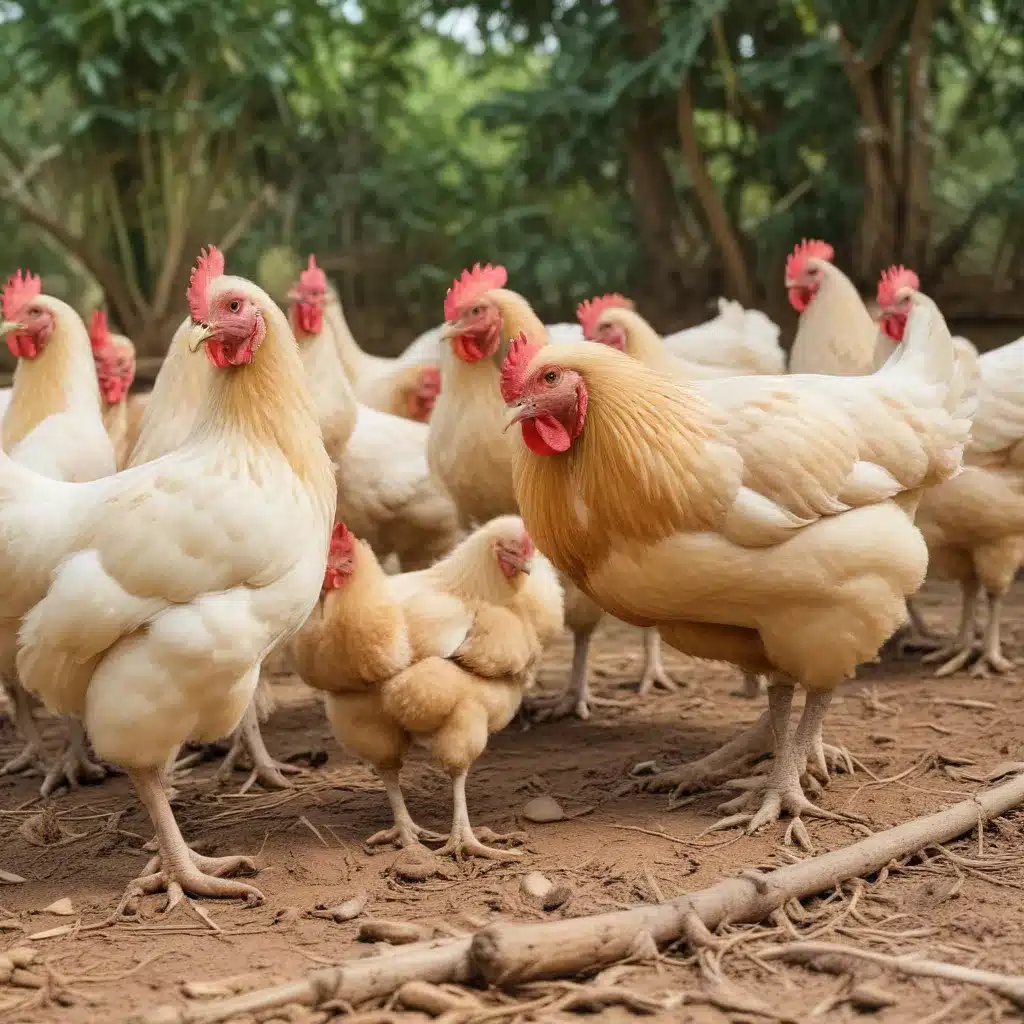
Avian Diversity and Ecology
Chickens are one of the most diverse and widespread avian species on the planet, exhibiting remarkable adaptability to a wide range of environmental conditions. Among the chicken populations, the indigenous breeds found in Nigeria are particularly noteworthy, possessing a rich genetic heritage shaped by centuries of natural selection and local adaptation.
Chicken Ecotypes
The Nigerian poultry landscape is home to a variety of indigenous chicken ecotypes, each with its own unique set of physical characteristics and performance traits. These include the Fulani ecotype, the frizzled feather, the naked neck, and the normal feather chickens. These local breeds have developed impressive resilience to the challenges of the tropical climate, thriving on limited feed resources and exhibiting exceptional hardiness.
Indigenous Chicken Breeds
The Fulani ecotype, for instance, is renowned for its ability to withstand heat stress and harsh environmental conditions, making it a valuable genetic resource for sustainable poultry production in Nigeria. The frizzled feather chicken, on the other hand, is prized for its distinctive curly plumage, which is believed to enhance heat dissipation and adaptability to the region’s climate.
Crossbreeding in Poultry
In the pursuit of enhanced performance and productivity, crossbreeding between these indigenous chicken ecotypes and the exotic Rhode Island Red (RIR) breed has become a common practice. The goal of such crossbreeding efforts is to combine the desirable traits of the local breeds, such as hardiness and adaptability, with the superior growth and egg production potential of the RIR. This approach has the potential to create innovative hybrid strains that can thrive in the Nigerian poultry sector.
Seasonal Factors Affecting Poultry
The performance and productivity of chickens are heavily influenced by the prevailing environmental conditions, particularly the seasonal variations in temperature, humidity, and precipitation.
Seasonal Variations
Nigeria’s diverse climatic zones, ranging from the late dry (summer) to the early rain (autumn), late rain (winter), and early dry (spring) seasons, present a dynamic landscape for poultry production. Each season brings its own set of challenges and opportunities, which must be carefully navigated to optimize the performance of both purebred and crossbred chickens.
Environmental Impacts
The impact of these seasonal variations on poultry performance is well-documented. High temperatures, for instance, can have a direct and negative effect on feed intake, egg production, and egg quality traits, as observed in the late dry (summer) season. Conversely, the more moderate temperatures and increased precipitation during the early rain (autumn) season can create favorable conditions for improved egg quality and overall bird health.
Adaptive Traits
The ability of indigenous chicken ecotypes to thrive in the face of these seasonal changes can be attributed to their inherent adaptive traits, developed through centuries of natural selection. Understanding the interplay between genetic makeup and seasonal factors is crucial for developing effective crossbreeding strategies that can maximize the performance of both purebred and crossbred chickens in the Nigerian context.
Genetic Diversity in Poultry
The genetic diversity inherent in the Nigerian indigenous chicken ecotypes and their crossbred counterparts is a valuable resource for the poultry industry, offering opportunities for selective breeding and the creation of innovative hybrid strains.
Crossbreeding Components
The crossbreeding efforts between the local chicken breeds and the RIR have yielded a range of genotypic and phenotypic variations, each with its own unique set of characteristics. The NNRIR (Naked Neck × Rhode Island Red) and RIRNN (Rhode Island Red × Naked Neck) crossbreds, for instance, have demonstrated superior external and internal egg quality traits compared to other crossbred and purebred chicken eggs.
Breeding Strategies
Leveraging this genetic diversity through strategic crossbreeding and selection is crucial for developing chicken strains that can thrive in the diverse climatic conditions of Nigeria. By identifying the optimal combinations of parental breeds and exploiting the principles of hybrid vigor, poultry breeders can create new hybrid lines that combine the hardiness of the local ecotypes with the productivity of the exotic RIR.
Phenotypic Traits
The observed variations in external egg quality traits, such as egg weight, egg length, egg width, shell weight, and shell thickness, as well as internal egg quality parameters, including yolk height, yolk length, yolk weight, albumen height, albumen weight, and Haugh unit, underscore the importance of understanding the genetic and environmental factors that shape these phenotypic characteristics.
Poultry Production and Management
Optimizing poultry production and management practices is crucial for unlocking the full potential of both purebred and crossbred chicken populations in Nigeria.
Avian Production Systems
The implementation of intensive production management systems, with appropriate housing, feeding, and healthcare protocols, can help ensure the well-being and productivity of the birds. Careful monitoring of environmental conditions, such as temperature and humidity, can further enhance the performance of the chickens, particularly during the challenging seasonal transitions.
Sustainable Practices
Embracing sustainable poultry production practices, such as the integration of local feed resources and the adoption of holistic health management strategies, can contribute to the long-term viability of the industry. By leveraging the adaptability of the indigenous chicken ecotypes and strategically incorporating them into crossbreeding programs, poultry farmers can develop resilient and productive chicken populations that are well-suited to the Nigerian context.
Genetic Conservation
Alongside the pursuit of enhanced productivity, the conservation of the genetic diversity of the indigenous chicken ecotypes is of paramount importance. Maintaining and safeguarding these unique genetic resources ensures the continued availability of valuable adaptive traits that can be leveraged in future breeding and crossbreeding initiatives.
The interplay between seasonal factors, genetic diversity, and sustainable poultry production practices holds the key to unlocking the full potential of the Nigerian chicken industry. By embracing a holistic approach that celebrates the strengths of both indigenous and exotic chicken breeds, while carefully navigating the challenges posed by the region’s climatic variations, poultry farmers and researchers can pave the way for a thriving and resilient poultry sector in Nigeria.
For more information on sustainable poultry production and the latest advancements in the field, be sure to visit the Mika Birds Farm blog, where our team of avian experts shares their insights and practical guidance.


